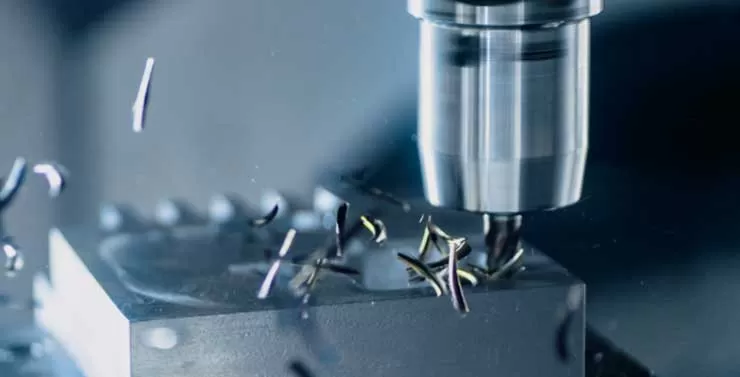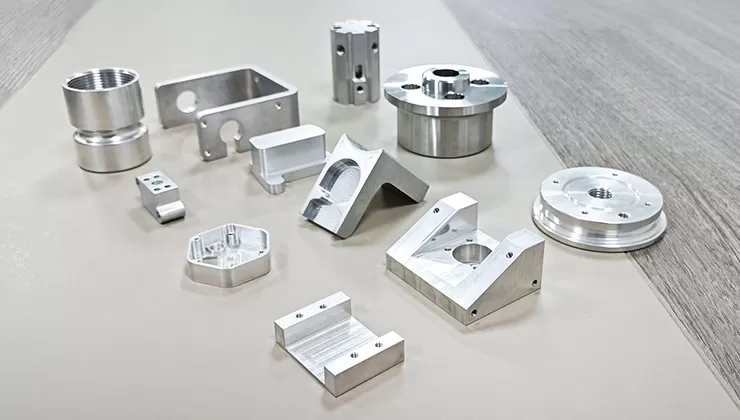CNC machining is a revolutionary technology that has transformed the manufacturing industry. This technology has evolved significantly over the years, and it has played a critical role in shaping the world we live in today. In this article, we will explore the history of CNC machining and how it has evolved over the years.
Origins of CNC Machining
CNC machining was first developed in the 1940s and 1950s as a means of producing complex aircraft parts. The technology was initially used in the aerospace industry, where precision machining was essential for the production of aircraft parts. The first CNC machines were large, expensive, and required highly skilled operators to program and operate them. With the increasing demand for manufacturing complex parts, the industry was in need of a more efficient way of producing them.

Advancements in CNC Machining
Over the years, advancements in technology have led to significant improvements in CNC machining. In the 1960s and 1970s, miniaturization of electronics and the development of microprocessors led to the creation of smaller and more affordable CNC machines. This made CNC machining accessible to a wider range of industries and manufacturers. In addition, these new machines were able to perform more complex operations, allowing for the production of more intricate components.
In the 1980s and 1990s, the introduction of Computer-Aided Design (CAD) and Computer-Aided Manufacturing (CAM) software made it easier to program and operate CNC machines. This led to further improvements in precision and accuracy, and CNC machining became an essential tool for manufacturing complex parts and components. These advancements also made it possible for engineers and designers to create parts with greater detail and complexity, leading to the creation of new products and innovations.
Modern CNC Machining
Today, CNC machining is an integral part of the manufacturing industry. Modern CNC machines are highly automated and can produce complex parts with high precision and accuracy. CNC machining has also become more affordable, making it accessible to small and medium-sized businesses. With the advancements in technology, CNC machines are now able to produce parts at a faster rate, allowing for increased production capacity and faster turnaround times.
The future of CNC machining looks bright, with ongoing advancements in technology that promise to make CNC machining even more efficient and effective. One of the most exciting developments in recent years has been the use of 3D printing in CNC machining. This technology allows for the production of complex parts with a high level of precision, while also reducing waste and lowering costs.
From aerospace to automotive, healthcare to electronics, CNC machining has revolutionized the way we produce complex parts and components. As technology continues to advance, the future of CNC machining looks bright, and we can expect to see even more exciting developments in the years to come.
Conclusion
In conclusion, the history of CNC machining is a story of innovation and progress. From its early days in the aerospace industry to its current widespread use in manufacturing, CNC machining has transformed the way we produce complex parts and components. With ongoing advancements in technology, we can expect to see even more exciting developments in the future.
The Importance of CNC Machining in Today’s Manufacturing Industry
CNC machining has become an integral part of the manufacturing industry due to its precision, accuracy, and efficiency. This technology has transformed the way we produce complex parts and components, making it possible to create intricate shapes and designs that were once impossible to manufacture.
The history of CNC machining dates back to the 1940s and 1950s, where it was initially used in the aerospace industry to produce complex aircraft parts. Over the years, advancements in technology have made CNC machines more affordable, accessible, and efficient. This has allowed smaller and medium-sized businesses to leverage the benefits of CNC machining and compete with larger companies in the industry.

One of the key advantages of CNC machining is its ability to automate the manufacturing process. This reduces the risk of human error and increases the accuracy and precision of the final product. CNC machines can also produce multiple parts at once, allowing for faster production and turnaround times. This makes CNC machining an ideal solution for large-scale manufacturing projects with tight deadlines.
Moreover, CNC machines are versatile and can be used to produce parts for a wide range of industries, including aerospace, automotive, healthcare, electronics, and more. CNC machines can work with a variety of materials, such as metals, plastics, and composites, making them suitable for producing both simple and complex parts and components.
The future of CNC machining looks bright, with ongoing advancements in technology that promise to make CNC machining even more efficient and effective. One of the most exciting developments in recent years has been the integration of artificial intelligence (AI) in CNC machines. This technology allows CNC machines to learn from previous jobs and optimize their performance, reducing manufacturing time and costs.
In conclusion, CNC machining has transformed the manufacturing industry and has become an essential tool for producing complex parts and components. Its precision, accuracy, and efficiency are unmatched, making it an ideal solution for large-scale manufacturing projects. With ongoing advancements in technology, the future of CNC machining looks bright, and we can expect to see even more exciting developments in the years to come.
The Advantages of CNC Machining in the Manufacturing Industry
CNC machining has become an integral part of the manufacturing industry due to its many advantages over traditional manufacturing methods. In this article, we will explore the advantages of CNC machining and how it has transformed the manufacturing industry.
Precision and Accuracy
One of the main advantages of online CNC machining is its precision and accuracy. CNC machines are capable of producing parts with extremely tight tolerances, making them ideal for applications where precision is critical. Unlike traditional manufacturing methods that rely on manual labor, CNC machines are automated and can repeat the same process over and over again with the same accuracy.
Efficiency
CNC machines are highly efficient and can produce parts at a much faster rate than traditional manufacturing methods. This is due to the fact that CNC machines are automated, and can run continuously without the need for breaks or rest. This allows for a faster turnaround time and increased production capacity.
Versatility
CNC machines are versatile and can be used to produce parts for a wide range of industries, including aerospace, automotive, healthcare, electronics, and more. CNC machines can work with a variety of materials, such as metals, plastics, and composites, making them suitable for producing both simple and complex parts and components.
Reduced Waste
CNC machining has helped to reduce waste in the manufacturing industry. Unlike traditional manufacturing methods that rely on manual labor, CNC machines are automated and can produce parts with minimal waste. This is because CNC machines are programmed to cut materials with high precision, which reduces the amount of scrap generated during the manufacturing process.
Cost-Effective
CNC machining is cost-effective, especially for large-scale manufacturing projects. Although the initial investment in a CNC machine may be costly, the long-term benefits of increased production capacity, faster turnaround times, and reduced waste make it a cost-effective solution for many manufacturers.
Future of CNC Machining
The future of CNC machining looks bright, with ongoing advancements in technology that promise to make CNC machining even more efficient and effective. One of the most exciting developments in recent years has been the integration of artificial intelligence (AI) in CNC machines. This technology allows CNC machines to learn from previous jobs and optimize their performance, reducing manufacturing time and costs even further.
In conclusion, CNC machining has transformed the manufacturing industry and has become an essential tool for producing complex parts and components. Its precision, accuracy, efficiency, versatility, reduced waste, and cost-effectiveness are unmatched, making it an ideal solution for large-scale manufacturing projects. With ongoing advancements in technology, the future of CNC machining looks bright, and we can expect to see even more exciting developments in the years to come.

